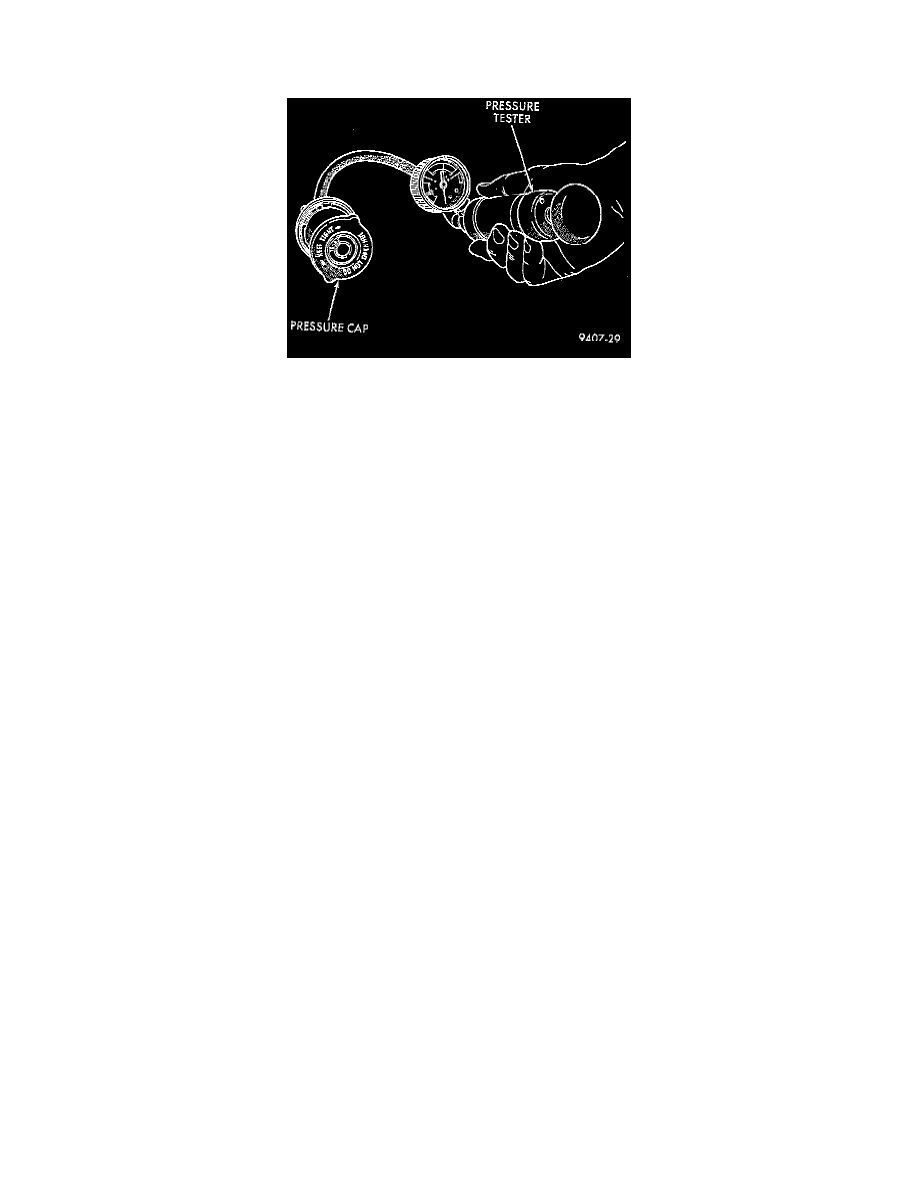Caravan FWD V6-201 3.3L VIN R MFI (1997)

Radiator Pressure Cap: Testing and Inspection
Radiator Cap - Pressure Testing
PROCEDURE
1. Dip the pressure cap in water, clean any deposits off the vent valve or its seat and apply cap to end of Radiator Pressure Tool.
2. Working the plunger, bring the pressure to 104 kPa (15 psi) on the gauge. If the pressure cap fails to hold pressure of at least 97 kPa (14 psi)
replace cap.
3. If the pressure cap tests properly while positioned on Radiator Pressure Tool, but will not hold pressure or vacuum when positioned on the
radiator. Inspect the radiator filler neck and cap top gasket for irregularities that may prevent the cap from sealing properly.
CAUTION: Radiator Pressure Tool is very sensitive to small air leaks that will not cause cooling system problems. A pressure cap that does not
have a history of coolant loss should not be replaced just because it leaks slowly when tested with this tool. Add water to the tool. Turn tool upside
down and recheck pressure cap to confirm that cap is bad.
INSPECTION
Hold the cap in hand, right side up. The vent valve at the bottom of the cap should open. If the rubber gasket has swollen and prevents the valve
from opening, replace the cap. Hold the cleaned cap in hand upside down. If any light shows between vent valve and rubber gasket, replace cap.
Do not use a replacement cap that has a spring to hold the vent shut. Replacement cap must be of the type designed for coolant reserve system with
a completely sealed diaphragm spring, and rubber gasket to seal to fillet neck top surface. This design assures coolant return to radiator.
